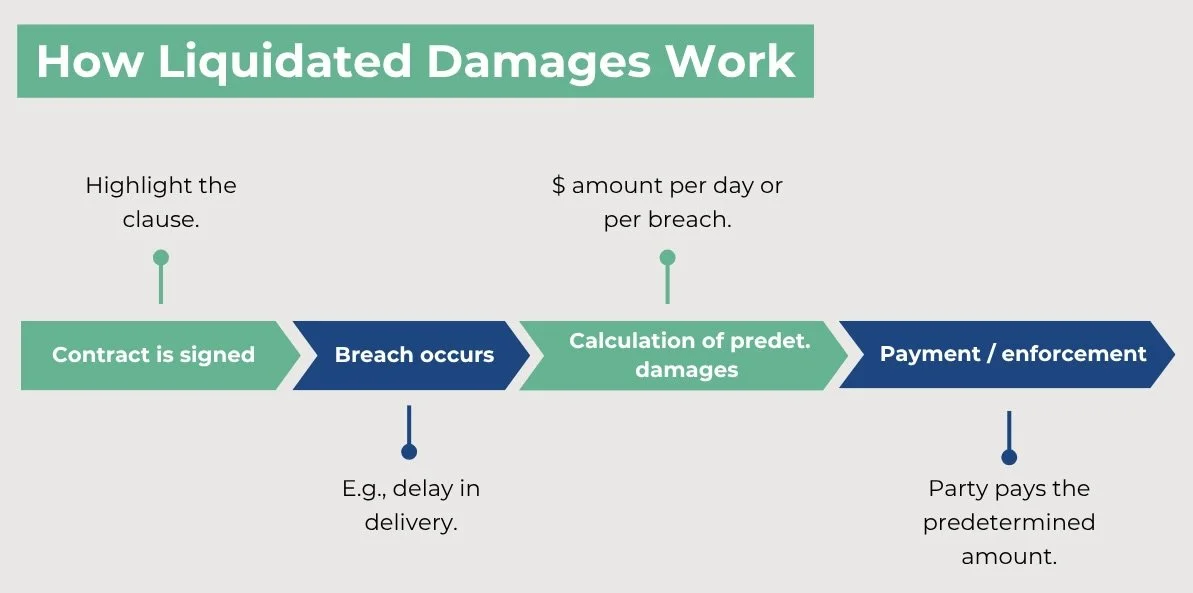Liquidated Damages Clauses: Your Friend or a Legal Landmine?
In commercial contracts, certainty is key. All parties want to know the terms and conditions of the contract, including what happens when things don’t go as planned. Liquidated damages clauses can be a powerful tool for risk management, but there are some important considerations to keep in mind when including these provisions in a contract.
What Are Liquidated Damages?
Liquidated damages are a predetermined amount of money that a party agrees to pay if they breach certain terms of a contract, often in the case of delays or failures to perform. These clauses are intended to estimate, in advance, the harm caused by a breach, especially when actual damages would be difficult to quantify.
Example: A contractor agrees to build a commercial property by September 1. The contract includes a clause requiring the contractor to pay $1,000 for every day the project is late. That $1,000 per day is the liquidated damages.
Parties rely on liquidated damages for certainty, efficiency, and risk allocation. However, including a liquidated damages provision does not guarantee that a court will enforce it in litigation. Courts will often enforce liquidated damages provisions if the harm from a breach of the contract was difficult to estimate at the time the contract was signed, the amount is a reasonable forecast of the damages, and the clause is not intended to be punitive. Courts will often decline to enforce liquidated damages clauses if the actual damages are easy to calculate, the clause is intended as a penalty instead of damages, or if the amount is not proportionate to the actual harm.
This flowchart helps you quickly assess whether a liquidated damages clause is likely to be enforceable based on key legal criteria.
Best Practices for a Liquidated Damages Clause
Involve legal counsel early on in drafting your agreements, and if you have standard agreements you already use, you can request that counsel review provisions related to damages. Document your rationale for the liquidated damages provision in case the provision is litigated later on. The amount included should be based on available business data to increase the likelihood of enforceability, and the provision should be tailored to specific breaches or metrics (such as a failure to deliver services on time under the contract), rather than a broad provision covering any type of breach. Liquidated damages provisions should be clear and conspicuous in a contract to try and avoid the breaching party claiming that a clause was unconscionable or not clearly mutually agreed upon.
Even when a liquidated damages clause is included, when there is a breach of contract, preserve records of actual damages calculations in case a court does not enforce the clause.
The Bottom Line
Used wisely, liquidated damages clauses can save time, reduce conflict, and provide valuable predictability. Used poorly, they can be struck down, or worse, invite litigation over their validity.
If you’re drafting or reviewing a contract with a liquidated damages provision, don’t just copy and paste. Consult legal counsel early to help understand the risks, weigh the benefits, and craft the clause carefully. Because in contract law, the line between a helpful shield and a legal landmine is often thinner than it seems.

